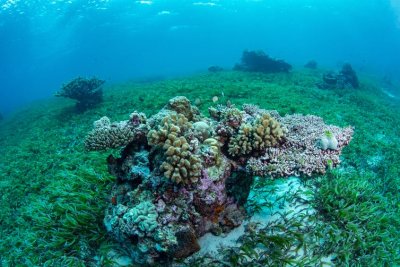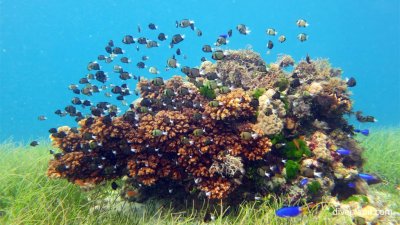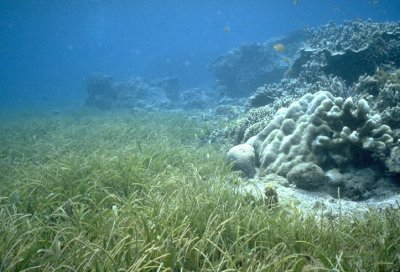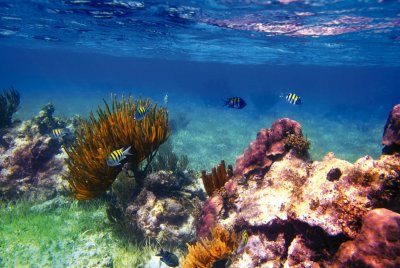So I wanted to pose a question to anyone with Seagrass experience. I've noticed there isn't a ton of reef setups out there with seagrasses in them. Ever since I saw a seagrass setup in an LFS years ago, I have always thought of setting one up. I am currently planning a large build and recently started a tank build thread. I am 95% settled on a biotope - an Indo-Pacific Bommie Reef surrounded by a seagrass bed. It will consist of a 412gallon peninsula style tank (or there abouts) with a vertical reef wall along the back sloping to a 3-6" sand bed(not determined yet) and a bommie reef-rock "island". For corals: predominately Pocillopora, Favia, Platygyra, Astreopora, a few Monti and Acropora a centerstage Sarcophyton or Lobophytum a few Zoas and maybe an Elegance amongst the seagrass. There will really be two focal points within the aquarium, the bommie reef island and the "Rest". I want this biotope to be a mini seagrass ecosystem revolving around the collective whole and not just the corals or fish. In actuality my plan is to have relatively few fish for this size system. Currently I have planned to house 25-30 fish (mostly small and consisting of fish from various regions such as the Indo-Pacific and Red Sea). I am thinking some striking contrasts such as: a small shoal of Yellow-tail Damsels (love their beauty) with a couple Yellow Coris wrasses; several orchid dottybacks and a neon dottyback or two; a radiant wrasse; possibly a Potters or Flame Angel, maybe a shoal of chromis and blennies/gobies; some other damsels such as Dascyllus Reticulatus; and a couple tangs: Blonde Naso, Gem and perhaps another. But I want just as much focus and interest on the few sea stars, several types of crabs (porcelain living amongst the Pocillopora), shrimp, and other invertebrates.
I am posting some inspirational pictures below to demonstrate what I am trying to achieve.
Some general questions and concerns I have: 1) I have read sea grasses are difficult to raise in the reef aquarium. The species I intend to keep are short species such as Halodule uninervis and Halophila Ovalis. Does anyone have insight on husbandry for these grasses. 2) Do these short seagrasses need to be routinely maintained in any way, ie. harvested, pruned, etc. 3) Does anyone see some immediate or overlooked issues with the projected tank setup? 4) Should i have worry with a DSB along with seagrasses, and what issues can I expect to have? I'm hoping the seagrass would mitigate the risk of nutrient build up (I also plan to have a large refugium system with chaeto and skimmer). 5) Any general advice, reference material or personal experience will be greatly appreciated.




I am posting some inspirational pictures below to demonstrate what I am trying to achieve.
Some general questions and concerns I have: 1) I have read sea grasses are difficult to raise in the reef aquarium. The species I intend to keep are short species such as Halodule uninervis and Halophila Ovalis. Does anyone have insight on husbandry for these grasses. 2) Do these short seagrasses need to be routinely maintained in any way, ie. harvested, pruned, etc. 3) Does anyone see some immediate or overlooked issues with the projected tank setup? 4) Should i have worry with a DSB along with seagrasses, and what issues can I expect to have? I'm hoping the seagrass would mitigate the risk of nutrient build up (I also plan to have a large refugium system with chaeto and skimmer). 5) Any general advice, reference material or personal experience will be greatly appreciated.




Last edited:

















